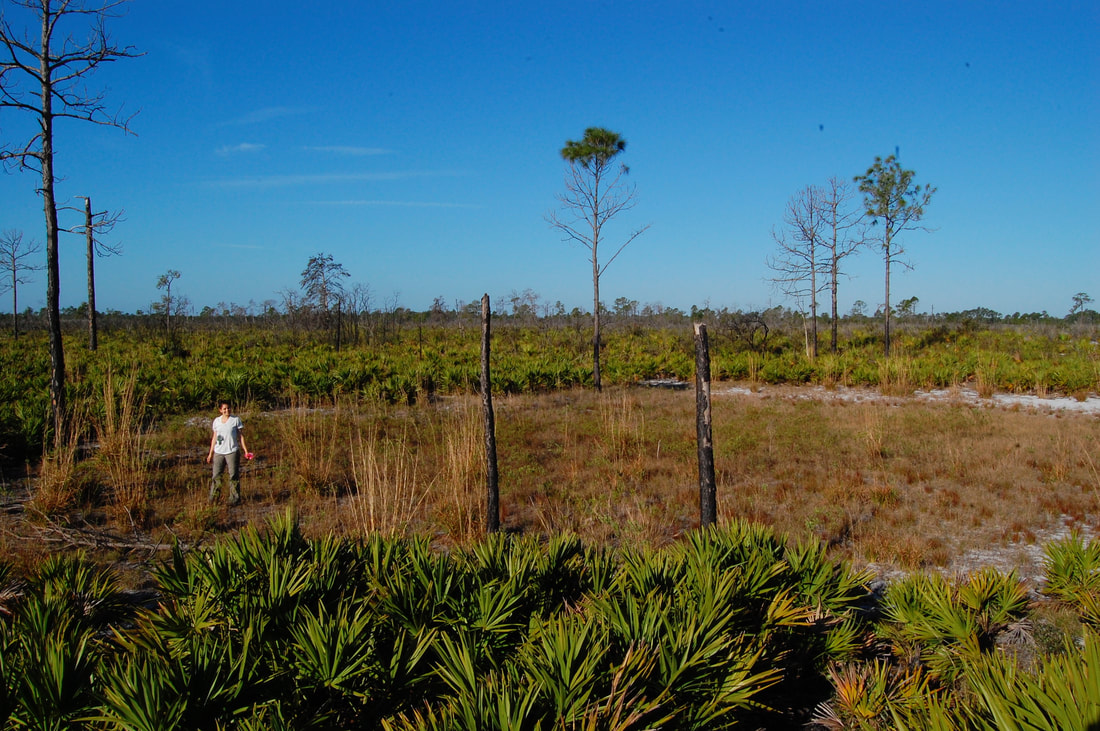|
In the past, I have studied how soil removal as a restoration practice affected nutrient stores and greenhouse gas emission from Prairie Pothole Wetlands in North Dakota.
Phillips, RL, CD Ficken, M Eken, J Hendrickson, and O Beeri. 2016. Wetland soil carbon in a watershed context for the Prairie Pothole Region. Journal of Environmental Quality. 45(1): 368-375. Phillips, RL and CD Ficken. Nitrous oxide emissions at the surface of agricultural soils in the Red River Valley of the north, U.S.A.In: Understanding Greenhouse Gas Emission from Agricultural Management. Guo, L, AS Gunasekara, and LL McConnell, Eds. ACS Symposium Series 1072. American Chemical Society: Washington, D.C., 2011, pp 29 – 49. |
|
In seasonal Florida wetlands, I examined how anthropogenic disturbance impacted the extant seed bank, and whether subsequent hydrologic restoration had the potential to restore a native aboveground community. Ficken, CD and E Menges. 2014. Seasonal wetlands on the Lake Wales Ridge, Florida: Does a seed bank persist despite long term disturbance? Wetlands Ecology & Management (6): 373-385. DOI 10.1007/s11273-013-9308-4 |


